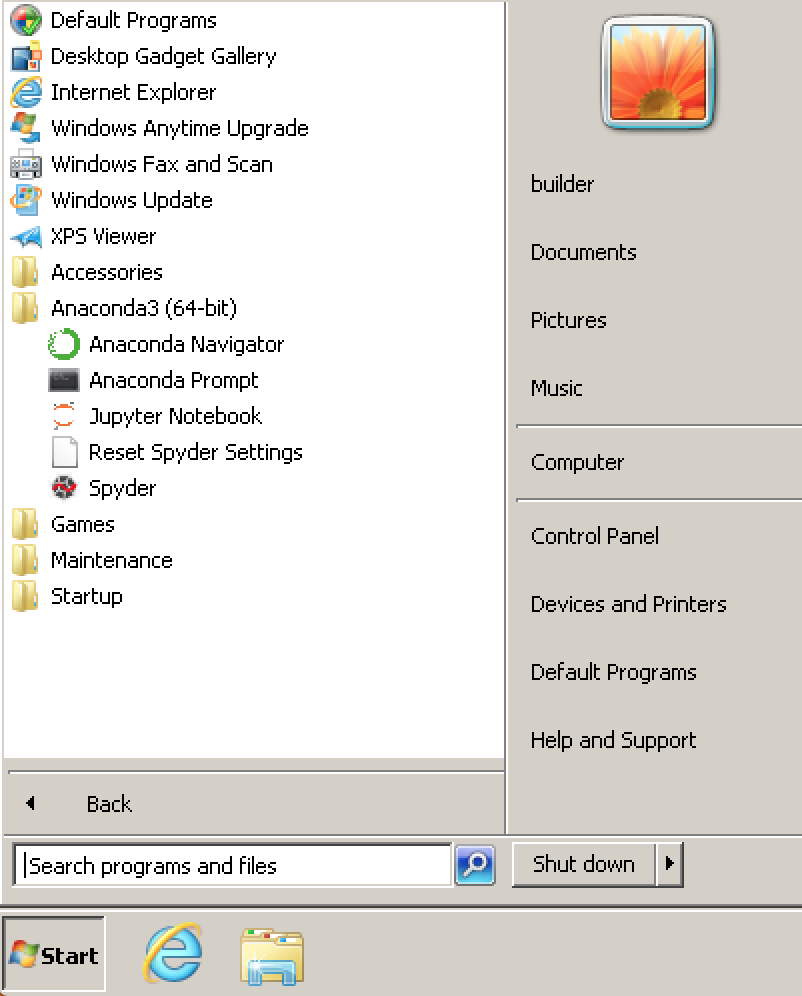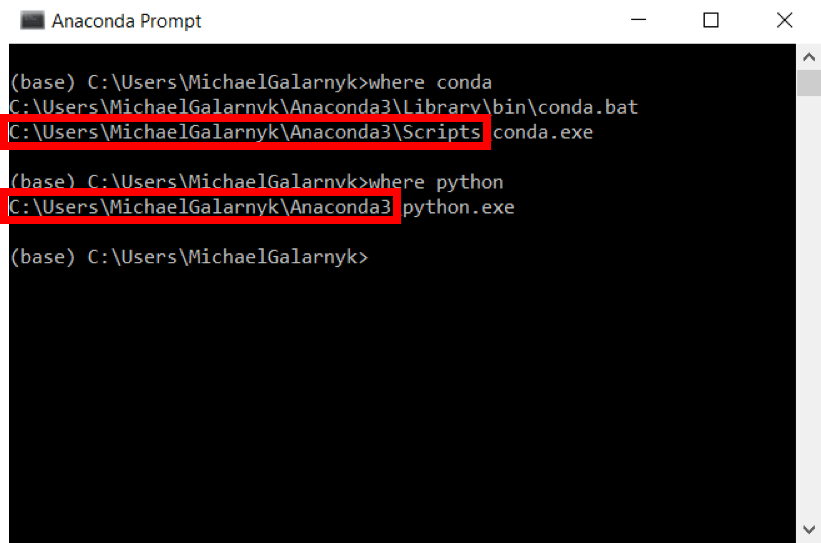

- #CONDA NOT RECOGNIZED IN ANACONDA PROMPT HOW TO#
- #CONDA NOT RECOGNIZED IN ANACONDA PROMPT INSTALL#
- #CONDA NOT RECOGNIZED IN ANACONDA PROMPT WINDOWS 10#
- #CONDA NOT RECOGNIZED IN ANACONDA PROMPT SOFTWARE#
With pip, you can install TensorFlow with GPU support as follows: The command will take some time to execute, so remain patient. Here is the command: $ pip3 install -upgrade tensorflow To do so, go to the start menu on your Windows machine, search for "cmd", right click it and choose "Run as administrator".Īfter that, you only have to run one simple command to install TensorFlow. Run the windows command prompt as an administrator. It is now finally time to install TensorFlow. Since you have installed the latest version of Python, that is, Python 3.x, you have pip3, and not pip. To do so, go to the command prompt and type: $ pip3 -version

Once the installation completes, check for the version of pip running on your system. Download the latest version of Python from the official Python website and install it. To get the pip package manager, you first need to install Python. The package can install TensorFlow together with its dependencies.Īnaconda is also a great option for installing TensorFlow, but it is not shipped with Python like pip is, therefore you must download and install it separately.īoth packages are open source, so feel free to choose the one you like. Python comes with the pip package manager, so if you have already installed Python, then you should have pip as well. On Windows, TensorFlow can be installed via either "pip" or "anaconda".
#CONDA NOT RECOGNIZED IN ANACONDA PROMPT SOFTWARE#
You must install the following software in order to run the GPU version of TensorFlow: It supports NVIDIA GPU card, with support for CUDA Compute 3.5 or higher. GPU supported TensorFlow requires you to install a number of libraries and drivers. If you need to use TensorFlow to process a huge amount of data, especially cases in which the data involves images, I'd recommend installing the GPU-supported version. However, the CPU version can be slower while performing complex tasks, especially those involving image processing. I'd recommend to install the CPU version if you need to design and train simple machine learning models, or if you're just starting out. When installing TensorFlow, you can choose either the CPU-only or GPU-supported version.
#CONDA NOT RECOGNIZED IN ANACONDA PROMPT HOW TO#
In this article, we will see how to install TensorFlow on a Windows machine. TensorFlow is an open source library and can be download and used it for free. The Google Cloud Vision and AlphaGo are some of the examples of the applications built on top of TensorFlow.


It is a machine learning framework developed by Google and is used for designing, building, and training of deep learning models such as the neural networks. 18362.752 PSEdition Desktop PSCompatibleVersions BuildVersion 10.0.TensorFlow is a deep learning framework that provides an easy interface to a variety of functionalities, required to perform state of the art deep learning tasks such as image recognition, text classification and so on. So, in Anaconda Powershell Prompt, you can run some powershell commands like these: > $PSVersionTable Name Value -– PSVersion 5.1. A new window titled Python Shell will open and you will see the Python > command prompt. How do I run an Anaconda Python prompt?Ĭlick Start All Programs Anaconda (64-bit) Anaconda Command Prompt.
#CONDA NOT RECOGNIZED IN ANACONDA PROMPT WINDOWS 10#
If you had successfully installed the anaconda the in windows 10 search bar you can type anaconda prompt to get the anaconda command line where you can start anaconda navigator by typing anaconda-navigator in anaconda prompt. How do I open Anaconda after installation?


 0 kommentar(er)
0 kommentar(er)
